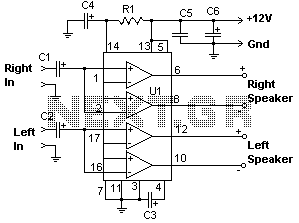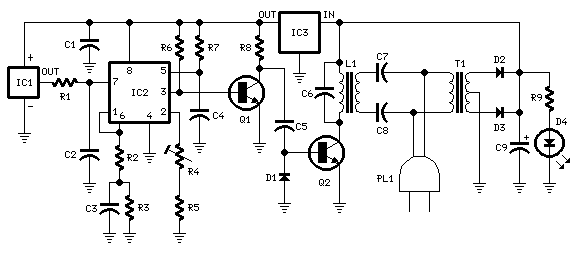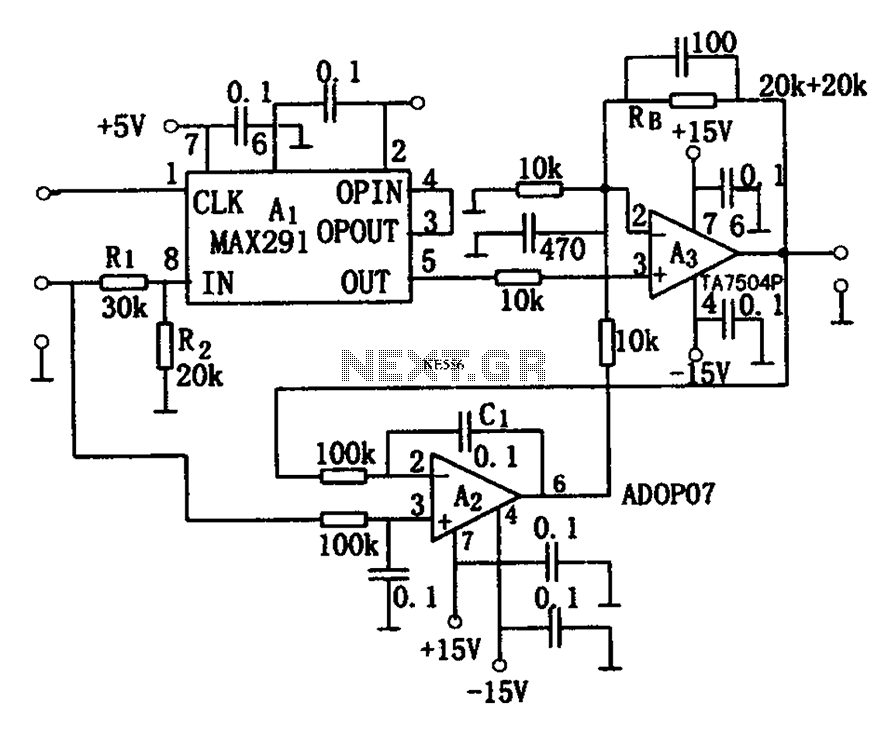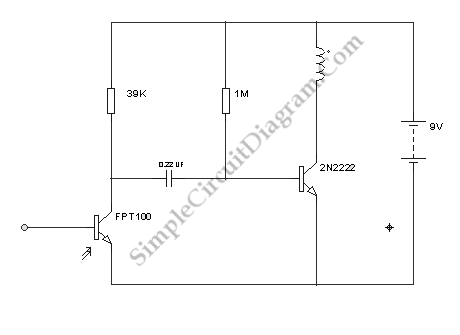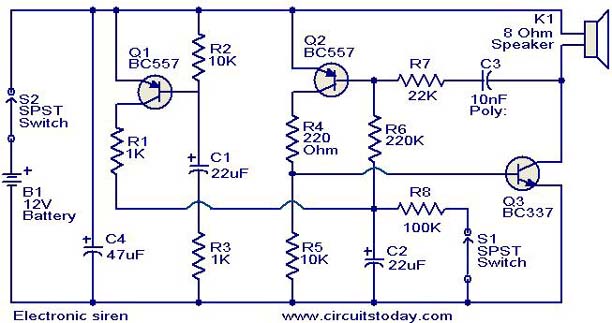
Infrared burglar alarm circuit schematic

The schematic for an infrared burglar alarm circuit is depicted in Figure 1. The infrared transmitter operates as a multivibrator with an oscillation frequency of 40 kHz, utilizing the NE555 integrated circuit (IC2), along with resistors R1 and R2 and capacitor C3. The VLS component serves as the infrared emission probe, capable of radiating a 40 kHz high-frequency signal externally to create the infrared beam. The VDL component acts as the infrared receiver probe.
The infrared burglar alarm circuit is designed to detect unauthorized entry by utilizing a pair of infrared probes: an emitter and a receiver. The NE555 timer IC is configured in astable mode to generate a continuous square wave signal at a frequency of 40 kHz. This frequency is chosen to optimize the detection range and reduce interference from ambient light sources.
Resistors R1 and R2, along with capacitor C3, are critical in determining the frequency of oscillation. The values of these components can be adjusted to modify the duty cycle and frequency of the output signal, allowing for customization based on specific application requirements. The VLS infrared emission probe emits modulated infrared light, creating an invisible barrier. When an intruder interrupts this beam, the VDL infrared receiver probe detects the absence of the signal.
The output from the infrared receiver can be interfaced with additional circuitry, such as a microcontroller or alarm system, to trigger an alert or notification upon beam interruption. This circuit can be powered by a DC power supply, ensuring that it remains operational under various conditions. The design can be further enhanced by incorporating additional features, such as adjustable sensitivity, multiple beam paths for increased security, and integration with wireless communication modules to send alerts to a remote monitoring system.Infrared burglar alarm circuit schematic is shown in Figure 1. Infrared transmitter is a multivibrator with oscillation frequency being 40kHz, and it is composed of IC2 ( NE555 ), R1, R2 and C3. VLS is the infrared emission probe which can be used to radiate 40kHz high-frequency externally to form the IR beam.
VDL is the infrared receiver probe, and it form.. 🔗 External reference
The infrared burglar alarm circuit is designed to detect unauthorized entry by utilizing a pair of infrared probes: an emitter and a receiver. The NE555 timer IC is configured in astable mode to generate a continuous square wave signal at a frequency of 40 kHz. This frequency is chosen to optimize the detection range and reduce interference from ambient light sources.
Resistors R1 and R2, along with capacitor C3, are critical in determining the frequency of oscillation. The values of these components can be adjusted to modify the duty cycle and frequency of the output signal, allowing for customization based on specific application requirements. The VLS infrared emission probe emits modulated infrared light, creating an invisible barrier. When an intruder interrupts this beam, the VDL infrared receiver probe detects the absence of the signal.
The output from the infrared receiver can be interfaced with additional circuitry, such as a microcontroller or alarm system, to trigger an alert or notification upon beam interruption. This circuit can be powered by a DC power supply, ensuring that it remains operational under various conditions. The design can be further enhanced by incorporating additional features, such as adjustable sensitivity, multiple beam paths for increased security, and integration with wireless communication modules to send alerts to a remote monitoring system.Infrared burglar alarm circuit schematic is shown in Figure 1. Infrared transmitter is a multivibrator with oscillation frequency being 40kHz, and it is composed of IC2 ( NE555 ), R1, R2 and C3. VLS is the infrared emission probe which can be used to radiate 40kHz high-frequency externally to form the IR beam.
VDL is the infrared receiver probe, and it form.. 🔗 External reference
